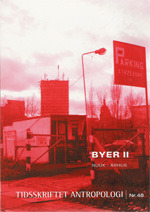SHANGHAI
DOI:
https://doi.org/10.7146/ta.v0i48.107092Resumé
The article traces the image of Shanghai
as the whore of the East. Taking Ian
Buruma and Avishai Margalit’s thoughtprovoking
book Occidentalism (2003) as
a point of departure, the author explores
how Shanghai because of its close relationship
to the West, epitomises a Chinese
ambiguous relationship between modernity
and tradition. Since the beginning of
the twentieth century Shanghai has been
associated with the promiscuous good-life
of the English and French colonial elite.
Mao saw Shanghai as the “most Western
whore of them all” and by waging war on
the city he put an end to the decadent
period of Western imperialism. Today
Shanghai is an impressive and at the same
time uncanny monument of China’s economic
growth and a symbol of modernity.
The article suggests that imaginings of
Shanghai are telling of China’s attempt
to develop modernity with Chinese characteristics.
Shanghai’s revival as the new
face of China being a centre of economic
growth and cosmopolitanism has, however,
given rise to a new fear of Westernisation.
Despite efforts to control the social
world including social spaces, changing
lifestyles pose new threats to the Communist
Party’s wish for monopoly of the
definition of social reality. This becomes
clear in a controversy over the novel
Shanghai Baby, which plays on Shanghai’s
previous image as the whore of the
East in a modern guise.
Downloads
Publiceret
Citation/Eksport
Nummer
Sektion
Licens
Ophavsretten til artiklerne i Tidsskriftet Antropologi tilfalder forfatteren.
Artikler publiceret i Tidsskriftet Antropologi må citeres, downloades og videresendes for ikke-kommerciel brug, under forudsætning af normal akademisk reference til forfatter(e) samt tidsskrift, årgang, nummer og sider. Artiklerne må kun genudgives med eksplicit tilladelse fra forfatter(e) og tidsskriftet.


